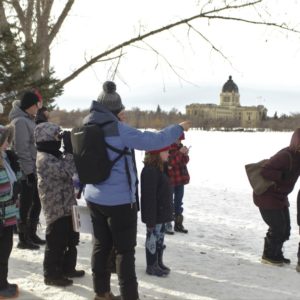Saskatchewan Takes Major Steps to Protect Wildlife and Promote Renewable Energy
FOR IMMEDIATE RELEASE
(OTTAWA—Sept 20, 2016)— Yesterday was a momentous day in Saskatchewan for wildlife protection and renewable energy. On the same day the Saskatchewan Ministry of Environment rejected the controversial Chaplin Lake wind energy project, they introduced new Provincial wind energy siting guidelines.
American Bird Conservancy, Nature Canada, and Nature Saskatchewan applaud the Government of Saskatchewan for their progressive leadership on wind energy development and wildlife protection.
“Nature Canada supports appropriately sited wind energy development, and these guidelines establish a new standard in Canada for protecting wildlife while providing the industry much
needed clear direction on how to avoid costly conflicts and delays,” says Ted Cheskey, Senior Manager for Nature Canada.
The guidelines set out clear “no-go” zones for wind developers that, for the first time in Canada, include Important Bird Areas with five-kilometre buffers around them, as well as many other
natural features of high significance. The guidelines also include clear language that directs developers to avoid siting projects on native prairie.
“We are thrilled about the Government of Saskatchewan’s decision and the new guidelines,” says Jordan Ignatiuk of Nature Saskatchewan. “Bird conservation has made a big leap forward,
thanks to these new provincial guidelines.”
“When it comes to wind energy, placement is everything. Large, commercial wind energy facilities should not be built in major migratory routes, breeding areas, or other sensitive habitats for wildlife, such as wetlands,” says Dr. Michael Hutchins, Director of American Bird Conservancy’s Bird-Smart Wind Energy Campaign “There are plenty of other places wind turbines can go that will result in fewer birds killed. ABC recognizes that Canada and the United States share billion of migratory birds, and that we need to work more closely together for their conservation,” adds Hutchins.
Grassland birds and shorebirds, species for which the Chaplin Lake area is of great importance, are in serious trouble, based on recent reports such as the State of North American Birds and
the Partners in Flight 2016 Report.
“This is exactly the type of action that is needed to meaningfully start helping the species in trouble,” says Cheskey.
-30-
For more information please contact:
Nature Canada Ted Cheskey, tcheskey@naturecanada.ca, Senior Conservation Manager, (613) 323-3331
American Bird Conservancy Michael Hutchins, Ph.D. Director, Bird-Smart Wind Energy Campaign, (202) 888-7485, mhutchins@abcbirds.org
Nature Saskatchewan Jordan Ignatiuk, Executive Director, (306)780-9293 office, (306) 551-0152 cell
For further media assistance, please contact:
Janet Weichel McKenzie
613-808-4642 jweichelmckenze@gmail.com
About Nature Canada
Nature Canada is the oldest national nature conservation charity in Canada. Over the past 75 years, we’ve helped protect over 63 million acres of parks and wildlife areas in Canada and the countless species that depend on this habitat. Today, we represent a network of over 45,000 members & supporters and more than 350 nature organizations in every province across
Canada.
About American Bird Conservancy
American Bird Conservancy is the Western Hemisphere’s bird conservation specialist—the only organization with a single and steadfast commitment to achieving conservation results for native birds and their habitats throughout the Americas. With a focus on efficiency and working in partnership, we take on the toughest problems facing birds today, innovating and building on sound science to halt extinctions, protect habitats, eliminate threats, and build capacity for bird conservation.



